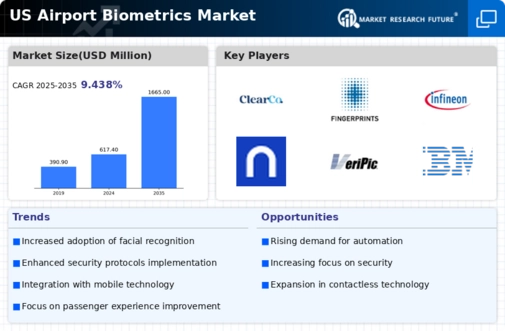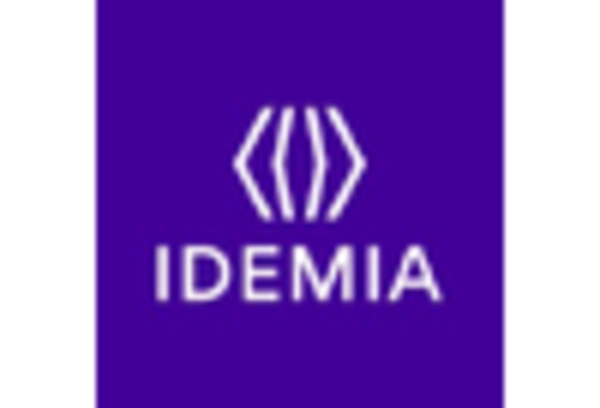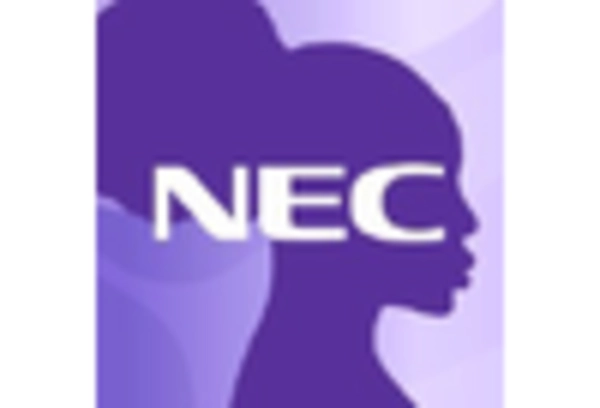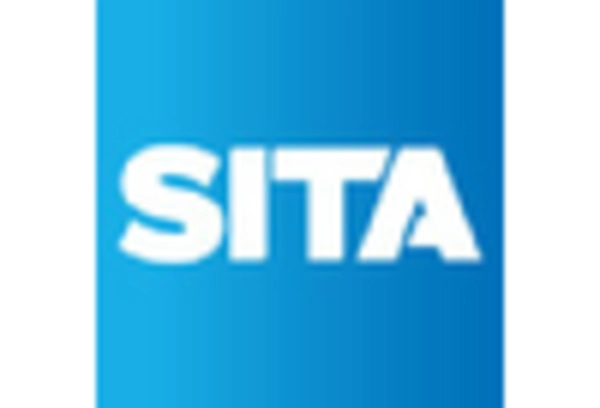Increasing Passenger Volume and Traffic
The airport biometrics market is significantly influenced by the increasing volume of air travel. As passenger traffic continues to rise, airports are under pressure to enhance operational efficiency and reduce congestion. Biometric technologies offer a viable solution to manage the growing number of travelers by expediting the check-in and boarding processes. The International Air Transport Association (IATA) projects that global passenger numbers will reach 8.2 billion by 2037, which underscores the urgency for airports to adopt innovative solutions. This trend is likely to drive investments in biometric systems, as stakeholders seek to improve the passenger experience while maintaining high security standards. Consequently, the increasing passenger volume serves as a vital driver for the airport biometrics market.
Focus on Streamlining Passenger Experience
The airport biometrics market is increasingly focused on streamlining the passenger experience. As travelers demand faster and more efficient processes, airports are turning to biometric solutions to enhance convenience and reduce wait times. Technologies such as facial recognition and iris scanning are being implemented to facilitate seamless travel experiences from check-in to boarding. This shift towards passenger-centric solutions is expected to drive market growth, as stakeholders recognize the importance of customer satisfaction in the competitive aviation landscape. With an estimated 70% of travelers expressing a preference for biometric identification methods, the airport biometrics market is likely to expand rapidly as airports prioritize enhancing the overall travel experience.
Regulatory Support for Biometric Solutions
Regulatory frameworks in the US are increasingly supporting the adoption of biometric solutions in airports. Government agencies are recognizing the potential of biometrics to enhance security and streamline operations. Initiatives aimed at modernizing airport security infrastructure are likely to encourage investments in biometric technologies. For instance, the Transportation Security Administration (TSA) has been actively exploring biometric identification systems to improve passenger flow and security efficiency. This regulatory support is expected to foster innovation and drive growth in the airport biometrics market, as stakeholders align their strategies with government objectives. The anticipated increase in funding for biometric projects could further accelerate market expansion, making it a pivotal driver in the industry.
Growing Demand for Enhanced Security Measures
The airport biometrics market is experiencing a surge in demand for enhanced security measures. With increasing concerns regarding safety and security in airports, stakeholders are investing in biometric technologies to streamline passenger identification and improve overall security protocols. The implementation of biometric systems, such as facial recognition and fingerprint scanning, is projected to reduce wait times and enhance the efficiency of security checks. According to recent estimates, the market is expected to grow at a CAGR of approximately 20% over the next five years, driven by the need for more robust security solutions in the aviation sector. This trend indicates a significant shift towards adopting advanced technologies to ensure passenger safety, thereby propelling the airport biometrics market forward.
Technological Advancements in Biometric Systems
Technological advancements are playing a crucial role in shaping the airport biometrics market. Innovations in artificial intelligence and machine learning are enhancing the accuracy and efficiency of biometric systems. These advancements enable faster processing times and improved identification rates, which are essential for managing the high volume of passengers at airports. The integration of advanced algorithms and high-resolution imaging technologies is likely to reduce false positives and enhance user experience. As a result, airports are increasingly adopting these cutting-edge solutions to optimize their operations. The market is projected to witness substantial growth, with investments in technology expected to reach $5 billion by 2027, indicating a strong commitment to enhancing biometric capabilities in the aviation sector.

















Leave a Comment